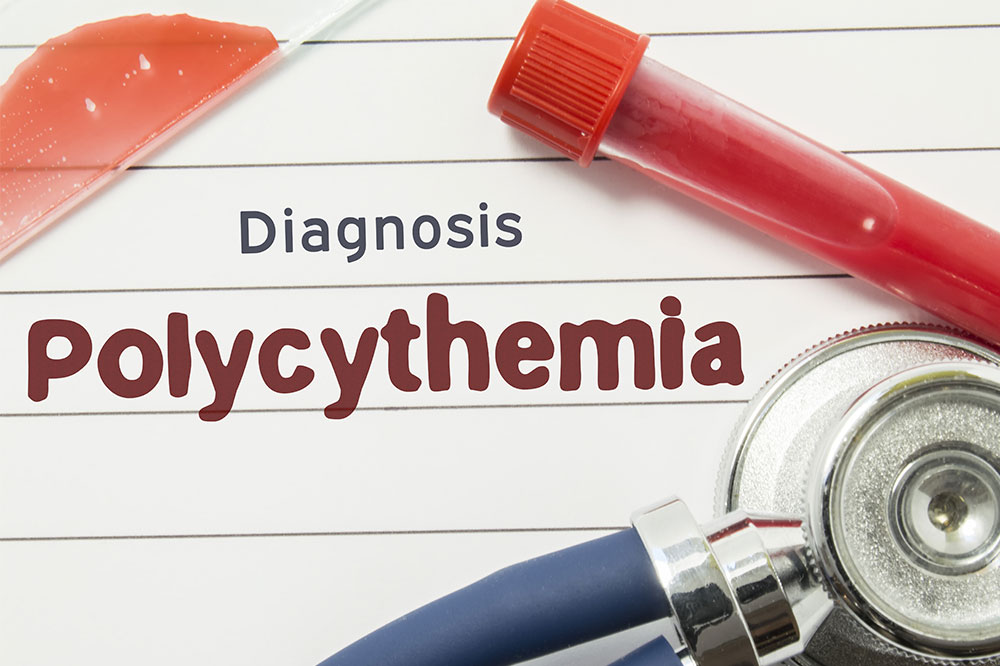Various Aspects of Polycythemia Vera
Polycythemia vera is a kind of blood cancer where an individual’s bone marrow produces excess red blood cells; these extra cells make the blood thicker and cause it to flow slowly, which leads to blood clotting. Polycythemia vera is often fatal if left untreated. However, receiving professional attention might lessen this disease’s symptoms and effects. Read on to know about various signs and symptoms of polycythemia vera and its remedies.

Signs and symptoms of polycythemia vera
Many individuals with polycythemia vera don’t exhibit any overt symptoms. Some persons may experience nebulous symptoms, such as headaches, vertigo, lethargy, and blurred vision. Additional polycythemia vera signs and symptoms include:
Itching, particularly following a warm bath or shower.
Hands, feet, arms, or legs are numb, tingly, burning, or weak.
Bloating or soreness in your left upper belly as a result of an enlarged spleen and a feeling of fullness shortly after eating.
Unusual bleeding, like nosebleeds or gums that are leaking.
One painfully swollen joint, frequently the big toe.
Respiratory problems and shortness of breath when lying down.
Polycythemia vera causes
Your bone marrow, which is the supple, spongy substance at the center of your bones, is where new blood cells develop. Polycythemia vera also develops here. It is initiated by a single gene in the bone marrow stem cell, which undergoes mutation. This is the major cause of polycythemia vera.
It’s a gene called JAK2 more often than not (almost 90% of the time). The altered gene instructs the stem cell to keep dividing indefinitely. All replicated cells keep producing until the abnormal cells in the individual bone marrow outnumber the healthy cells.
The JAK2 gene mutation is typically acquired rather than inherited from a family member. It can occur to people for unexplained reasons at some point in their life.
Most recommended polycythemia vera home remedies
Healthcare professionals will probably advise general lifestyle modifications in addition to routine testing and treatment to help prevent blood clots and other issues. For instance:
Exercising regularly is advisable since it helps improve slow circulation
Avoid places with low oxygen levels. The amount of oxygen in the blood can decrease at high elevations
Keeping an eye on the blood pressure. This can be facilitated by maintaining a healthy body weight
Eating less food that has been deep-fried because doing so can raise your consumption of unhealthy trans fats, cholesterol, and fat
Additionally, avoid seasoning your food with salt or sugar because they can dehydrate the food and don’t supply essential nutrients.
Foods to help polycythemia vera
While food changes cannot reverse the condition, but modifying your food regime according to your healthcare specialist can help to manage it. You must consume adequate amounts of specific nutrients as recommended by the doctor and also consider avoiding some food ingredients that may pose health risks, such as:
Water
Kidney stones and gout are more likely to occur due to the excess red blood cells that polycythemia vera produces. To minimize the risk of these conditions, consuming enough water is essential. While getting enough water won’t entirely address these issues, it can help lessen their severity and risk.
Calcium
Consuming adequate calcium in your meal plan is critical because polycythemia vera is linked to bone marrow destruction, which might raise your risk of fractures. This mineral aids in constructing and maintaining strong bones.
Oxalate
Another risk factor for kidney stones is having blood in your urine. Kidney stones also produce flank discomfort and lower back pain on one side. Oxalate, a kidney stone-causing substance, is generally advised to be avoided in meals, including beans, berries, and leafy greens.
Processed food
Preservatives and highly processed meals can raise cancer risk and inflammation. Therefore, it’s crucial to eat fresh foods as much as possible.
Patients may be recommended to eat foods high in carbohydrates throughout the day, such as brown rice and bananas, to maintain energy levels and drink enough water. It’s crucial to realize that certain meals can worsen several significant complications if you have polycythemia vera and adapt to a new food regime accordingly.
Polycythemia vera treatment methods
Treatment for polycythemia vera comprises the following procedures:
Phlebotomy
Routine blood draws are the most popular form of treatment for PV. A healthcare professional draws a small amount of blood intravenously; the amount varies based on your condition.
Prescription treatment
To lower the risk of clotting blood, doctors often give prescription treatment in small doses to help keep blood platelets from adhering to one another. It can also help ease symptoms such as inflammation in the hand and foot.
Radiation therapy
Hyperactive bone marrow cells are suppressed through radiation therapy. This reduces your red blood cell count and maintains more or less normal blood flow and thickness.
Conclusion
Although polycythemia vera (PV) is a form of malignancy, most patients live healthy lives for many years after being diagnosed. The risk of blood clots, more than the possibility of malignancy, is the greatest threat from polycythemia vera. Make sure to visit your healthcare practitioner frequently if you have PV.
Healthy lifestyle choices can help you preserve your overall cardiovascular health, which may be just as vital as any polycythemia vera treatments.

